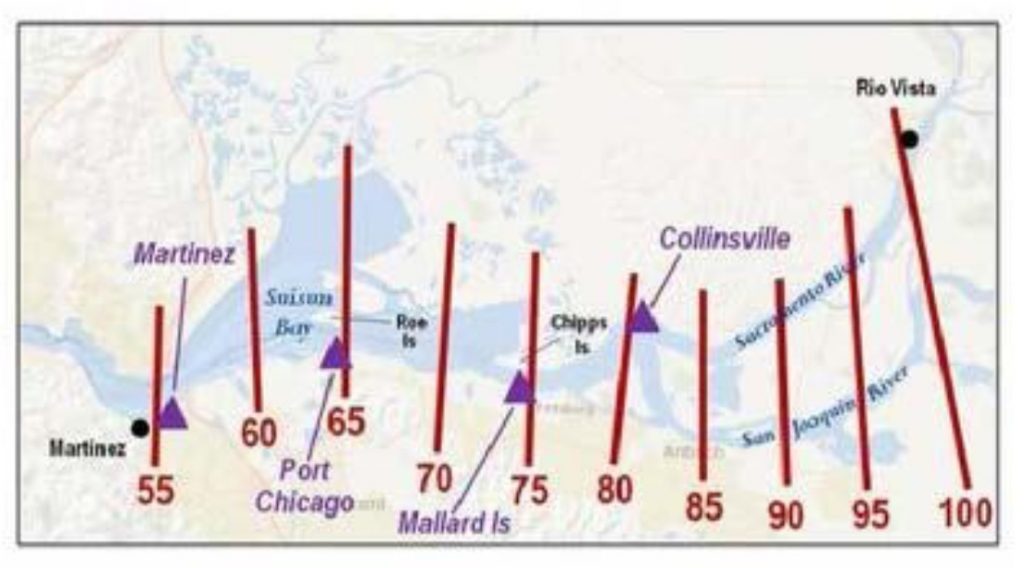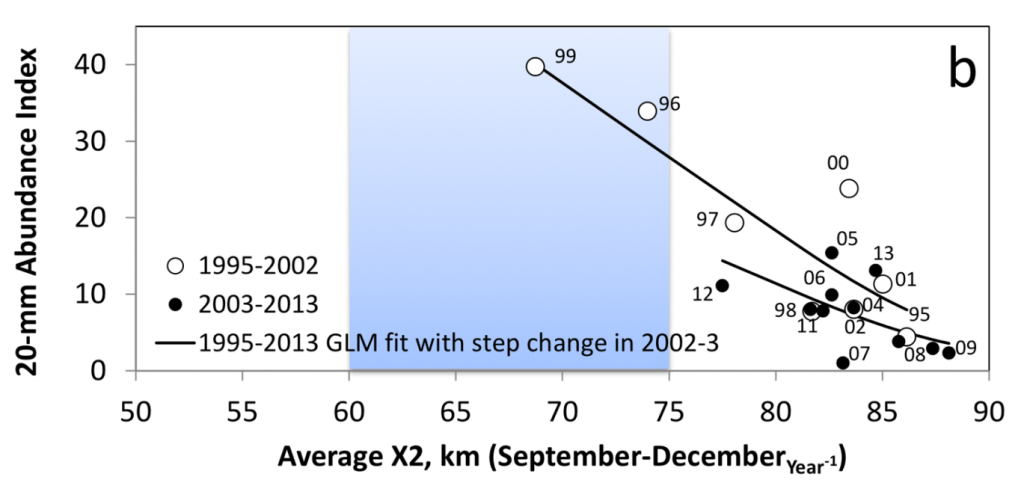There is a science-management obsession with Fall X2 – the location of the 2 parts-per-thousand salinity location in the Bay-Delta in the autumn. More specifically, Fall X2 is the average km location of X2 for the months of September-December. Such an average index seems ridiculous given that X2 varies so much especially in December, or even in a year like 2016 in October-November. Despite this, resource agencies have been intent on trying to manage the Delta smelt population by manipulating Fall X2 based on the relationship between Fall X2 and the following spring 20-mm survey smelt index shown in Figure 1. Fall X2 is an element of Action 4 in the Smelt OCAP Biological Opinion.
The problem is not that fall flows and X2 location are not important to Delta smelt. It’s that the previous year’s winter-through-fall flows, Delta exports, and fall adult population abundance are all related to the subsequent year’s production of smelt. So are winter-spring conditions. Smelt production in any year is related to all these factors, with some factors being more important in some years. A spring index can be low for many reasons, including bad conditions that spring regardless of the location of X2 the previous fall.
Focusing on any one parameter like Fall X2 is dangerous. Since there is only limited water in a drought year, it is critical that available water be distributed in a way it does the most good. If all the smelt die in June, it doesn’t help much to allocate a lot of water in the fall.

Figure 2. River kilometer reference locations for X2. Collinsville (km 81), Mallard Island, and Port Chicago are standard reference locations when specifying X2 standards.
The Fall X2 factor is being studied in the FLaSH program.1 The study is being undertaken as an adaptive management experiment. “According to the FLaSH conceptual model, conditions are supposed to be favorable for Delta Smelt when fall X2 is approximately 74 km or less, unfavorable when X2 is approximately 85 km or greater, and intermediate in between (Reclamation 2011, 2012). Surface area for the LSZ at X2s of 74 km and 85 km were predicted to be 4000 and 9000 hectares, respectively (Reclamation 2011, 2012).”
The Smelt BO is being revised by the US Fish and Wildlife Service. The State Board is considering new Delta water quality standards for the Delta. Let’s hope they place less emphasis on the Fall X2 factor and more emphasis on progressively managing hydrology, water quality, and fish populations in the Bay-Delta.

